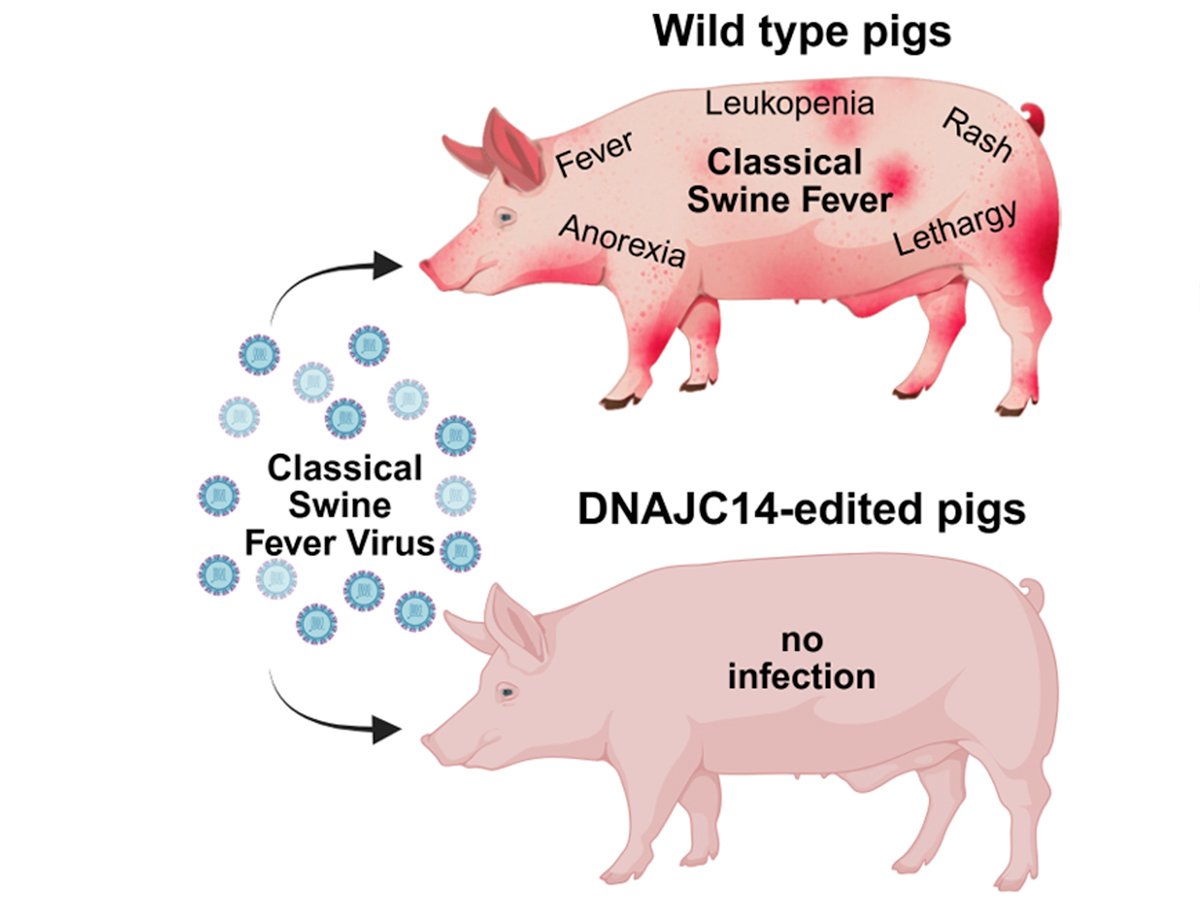Peter Driedger of Winkler, Man., is anxious about the damage frost could do to his edible bean and canola fields.
In his area, some canola crops have podded but others are still in bloom.
“The fields look nice right now,” he said Aug. 16. “It’s just a matter of the calendar versus the crops.”
Driedger said his corn crop is 10 days to two weeks behind normal this year because of cool, wet weather.
In a corn field day at Carman, Man., last week, growers were told there’s at least a 50 percent chance of a severe frost before the end of September, based on a review of weather trends over a 30-year period beginning in 1971.
Read Also

Gene edited pig resistant to classical swine fever
British scientists have discovered a gene edit that could provide resistance to classical swine fever in pigs and Bovine Viral Diarrhea in cattle
Silaging was cited as an option for growers of grain corn if the crops get struck by frost before they can mature.
However, Driedger said that may not be much of an option in his area of central Manitoba because of a feed abundance.
“If there’s a frost, there would be a lot of silage corn available and I doubt there’d be much of a market for it.”
Sunflowers, corn, edible beans and soybeans are among the crops in Manitoba that could suffer most with an early frost.
But Manitoba Agriculture provincial agronomist John Hollinger said there is also concern about canola crops “and any crop seeded around the middle of June.”
About a third of the province’s canola was planted in June because of the wet spring. Seeding was also delayed by a snowstorm that swept across parts of southern Saskatchewan and Manitoba in mid-May.
“It would be a big mess if we had an early frost,” Hollinger said. “The amount of sunlight and amount of heat we get will determine if these special crops are going to make it on time.”
Environment Canada forecasts cooler overnight temperatures on Aug. 18 and 19, but predicts warmer than usual temperatures in the following weeks.
Meteorologist Bob Cormier said an Arctic high pressure system resulted in patchy frost and 0 C temperatures at Scott, Sask., Vegreville and Nisku, Alta., and Dawson Creek, B.C. on Aug. 11.
Cormier said a temperature of Ð3 or Ð4 C is considered a killing frost.
Bill Fraser, marketing manager with the North West Terminal in Unity, Sask., woke up Aug. 11 to find frost on the rooftops and windshields.
“That’s pretty darn early for it,” he said.
Fraser thought heavy fog and damp conditions kept the cool air from damaging crops.
“I think it was wet enough that it didn’t hurt anything.”
Fraser said area producers are largely on schedule for harvest this year, with many now desiccating and swathing peas. Regional conditions are very good to the north and a little poorer in the drier south.
“I think we’ve got a big crop,” he said.














